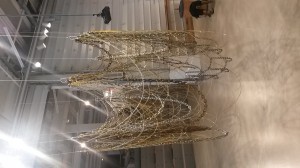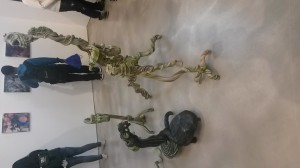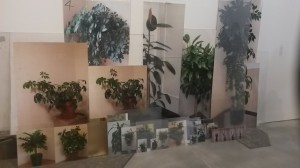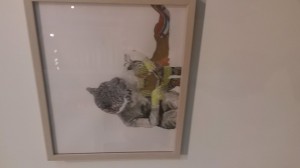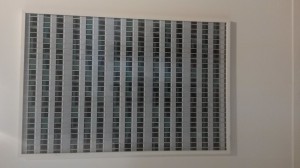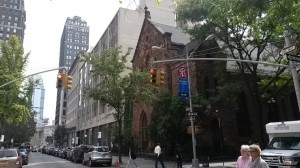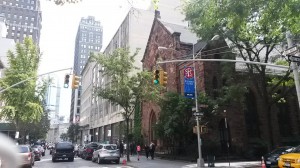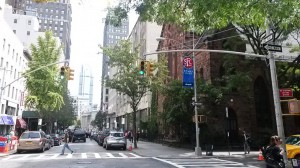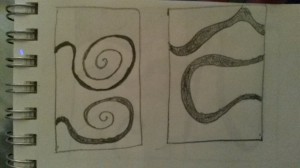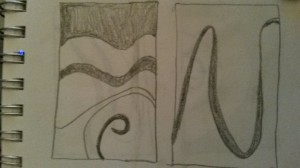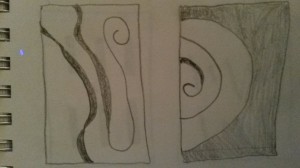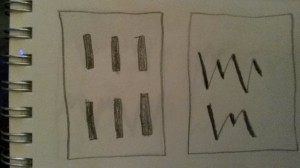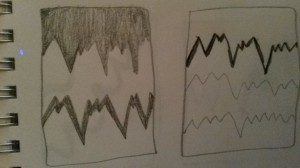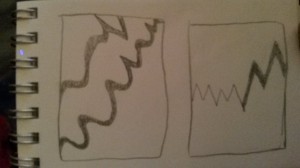I chose this subject in particular because it pinpoints two completely different time periods of New York and brings them together into one frame. From the image that I captured, I was able to see where we were as a city (before my time), and how much things have changed as well as how far we have come. Over the course of the years the city has changed drastically, but the streets still hold the history of what came before. Colson Whitehead supports my concept in what he says in his passage. He states, ” Our streets are like calenders containing who we were and who will be next”. In this case, the “we” depicted in this quote represents the path or destiny of the city. In this passage, Whitehead conveys the message that the streets of the city record everything that has happened and endures what will result from this as the new New York begins to emerge. My juxtaposition fits the concept that Whitehead wants to bring across. Knowing that the church building in my photo frame is of the old New York, this represents who “we” once were, as Whitehead stated. However, the photo also depicts Remsen street which is a one-point perspective leading to a single vanishing point. And at the end of this vanishing point Is the sky scraper which symbolizes what we know as the presnt day New York.
Whitehead also further explains the concept of the overlap between the two cities. In the last paragraph of his passage he says, ” What follows is my city. Making this a guide book, with handy color-coded maps and miniscule fine print you should read very closely so you won’t be surprised. It contains your neighborhoods. Or doesn’t. We overlap. Or don’t. Maybe you’ve walked these avenues, maybe it’s all Jersey to you. I’m not sure what to say. Except that probably we’re neighbors. That we walk past each other everyday,and never knew it until now”. I found this intriguing because it explains that the different New Yorks are like a ” guide book” and the new New York is the latest city to be built onto what came before. He seems to be undecided at whether these New Yorks overlap or not. But the reality is that these overlaps will always be around as long as New York begins to evolve. Therefore, this quote supports what my juxtaposition represents.
Overall, my juxtaposition depicts the proper overlap between the two New Yorks. As time progresses new overlaps will always be created. Whitehead says that we must not fight the inevitable because nothing is meant to last forever. These eight million New Yorks he mentions will never be the same as the one I know or even the one my neighbor knows. But when we look back at the city we have grown to love, we can always spot a particular aspect that we can reminisce from our own New York.
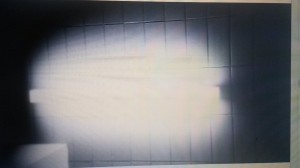
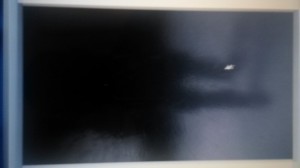 My first image portrays a regular light from the school stairway. After adding the black and white filter, I was able to understand this particular shade of color. This picture displays a high key perspective that gives off somewhat of an evil vibe. This makes me think back on a scene in Law and Order . The mood may even be depressing to some people who view it from a different perspective. My second image depicts a low key image from a stairway door. It has a similar vibe to that of the high key, however it does go deeper into the perspective. It portrays a solid glossy black color, which in retrospect does not usually represent a positive concept from most peoples point of view.
My first image portrays a regular light from the school stairway. After adding the black and white filter, I was able to understand this particular shade of color. This picture displays a high key perspective that gives off somewhat of an evil vibe. This makes me think back on a scene in Law and Order . The mood may even be depressing to some people who view it from a different perspective. My second image depicts a low key image from a stairway door. It has a similar vibe to that of the high key, however it does go deeper into the perspective. It portrays a solid glossy black color, which in retrospect does not usually represent a positive concept from most peoples point of view.